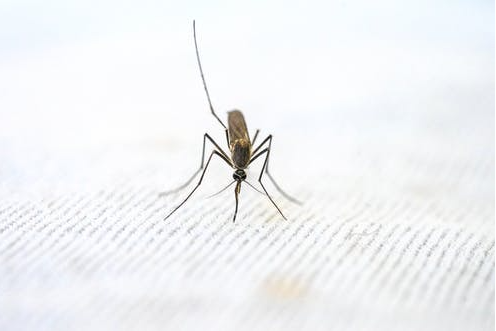NEWS
Transforming Your Home for a Dengue-Free Environment

As dengue cases continue to surge on a global scale, the significance of proactive prevention and effective mosquito control becomes increasingly evident. In the face of this concerning trend, it is crucial to take action to protect your home and loved ones.
By implementing the straightforward measures outlined below, you can proactively transform your living environment, reduce the risk of dengue transmission, and ensure the safety and well-being of your family.
Understanding Dengue and How It Spreads
Similar to malaria, dengue fever is a viral infection transmitted by Aedes mosquitoes, causing flu-like symptoms that can develop into potentially deadly severe dengue. The rapid spread is fueled by urbanization, climate change, and international travel.
The Aedes mosquito breeds in clean, stagnant water found outdoors and indoors. Typical breeding sites include water storage containers, flower vases, unattended swimming pools, discarded tires, and more. To control dengue, it’s crucial to stop these insects from multiplying.
Reducing Mosquito Breeding Sites Indoors
At home, carefully inspect for any stagnant water accumulation and drain it out. This includes water in plant saucers, pots, trays, overflowing tanks, puddles in air conditioner drip trays, cans, bottles, and more.
Water storage containers should be fully covered and taps should be closed properly to avoid leakage. Check window panes and clean out the water collected in uneven sills. Remove clutter like stacks of unused tires, open bins, bottles, and jars as they can collect rainwater. Fix leaking pipes, taps, and tanks as they create their habitats indoors.
Minimizing Mosquito Entry Points
Install tight screens on doors, windows, and other openings to prevent them from sneaking into your home. Check screens for damage and holes, repairing or replacing them if required. Make it a habit to keep doors and windows closed, especially during dawn and dusk when some species are most active.
Nets also provide an added layer of protection while sleeping or resting indoors. Cracks and crevices through which the tiny insects can enter need to be sealed using caulk or expandable foam. Proper sealing also improves energy efficiency!
Removing Breeding Sites Outdoors
Outdoors, focus on eliminating standing water habitats. Empty out water that collects in plant pots, feeding bowls, containers, and gutters after rainfall. Frequently change water in birdbaths and scrub the sides. Fill potholes and ditches where rainwater accumulates.
Unclog blocked gutters, drain pipes, and discharge lines. Chlorinate and change water in ornamental ponds, fountains, and wading pools regularly. Keep swimming pools clean and filtered – don’t let water stagnate. Removing excess vegetation like weeds around the home eliminates resting spots.
Getting Help from the Experts
To achieve effective mosquito control and minimize the risk of breeding in your home, companies offering professional pest management services can be a valuable resource. These experts are equipped to handle various aspects of preventing these sneaky pests while ensuring minimal disruption to your daily life.
Consider the following steps when seeking professional assistance:
- Seasonal Scheduling: It’s essential to schedule professional visits strategically. Aim for appointments during rainy seasons or when daytime temperatures rise, as these are periods when mosquito activity tends to be at its peak.
- EPA-Approved Solutions: Reputable pest control companies use EPA-approved insecticides and larvicides, which are safe and effective in targeting mosquitoes. These treatments are especially valuable for hard-to-reach outdoor areas where they may breed.
- Eco-Friendly Options: In your quest to prevent them from breeding in your home, inquire about environmentally friendly or “green” products. These options balance efficacy with low toxicity, minimizing any potential harm to the environment and other beneficial insects.
Additional Steps to Consider
In addition to seeking professional services, there are several supplementary measures you can take to enhance your prevention efforts. These actions, when combined with professional assistance, can significantly reduce the risk of mosquito breeding and transform your home into a dengue-free haven.
Misting Systems
Installing automated misting systems is a proactive step you can take to maintain ongoing protection within your outdoor spaces. These systems release mosquito-repelling solutions at scheduled intervals, creating a barrier that keeps your environment virtually mosquito-free. With the convenience of automation, you can enjoy your outdoor areas without the constant worry of infestations.
Landscaping Solutions
Collaborating with your landscaper is another essential aspect of preventing mosquitoes at bay. By incorporating mosquito-repelling plants into your outdoor spaces, you not only enhance the aesthetics of your landscape but also provide a natural deterrent against these mozzies.
Plants such as citronella, lavender, and basil have properties that naturally discourage mosquitoes from congregating in your yard. This botanical approach not only contributes to a mosquito-free environment but also creates a beautiful and fragrant outdoor space.
Community Resources
Relevant departments in your locality may offer additional resources that can complement your prevention efforts. This may include house inspections and community fogging services.
House inspections can help identify potential breeding sites within your property, and community fogging services can address mosquito issues on a broader scale within your neighborhood. Leveraging these resources can be a valuable and collaborative way to prevent mosquito breeding not only in your home but also in your community.
By considering these additional steps alongside getting help from professional services, you can create a comprehensive and multifaceted approach to mosquito prevention. These measures not only reduce the risk of mosquito breeding but also contribute to the creation of a dengue-free home and community, ensuring a safer and more enjoyable living environment for all.
In a Nutshell
By draining standing water, sealing entry points, seeking expert help for safer spraying, and even taking the above-mentioned additional steps, you can make your home mosquito-free and ensure your family stays dengue-free in any season. Protect your health and comfort by incorporating these strategies into your home maintenance routine.










